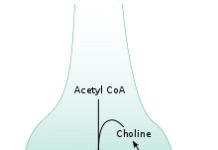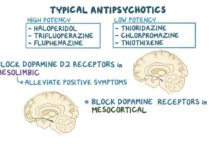A heart attack, or myocardial infarction, occurs when there is a blockage in a coronary artery, affecting the flow of oxygen-rich blood to your heart.
Having a heart attack is a medical emergency. Blocked or reduced blood flow to your heart damages the heart muscle. If blood flow is not restored quickly, the heart muscle will begin to die, according to the Cleveland Clinic. (1)
Signs and Symptoms of a Heart Attack
Symptoms of a heart attack can vary greatly from person to person. They’re likely to be more severe if you’re having a major heart attack, in which a blood clot completely blocks an artery leading to your heart.
Common heart attack symptoms include the following:
- Chest pain (angina)
- Pain or discomfort in your jaw or neck
- Pain or discomfort in your arms, shoulders, or back
- Indigestion or sense of choking
- Shortness of breath
- Sweating, especially a cold sweat
- Nausea or vomiting
- Lightheadedness or dizziness
- Weakness
- Anxiety
- Rapid or irregular heartbeat
Sudden chest pain is the most common heart attack symptom, but not all people experience it. Some people have only mild symptoms that come on gradually. (1,2,3)
Because a heart attack is a medical emergency, dial 911 right away if you experience symptoms that you believe are caused by one.
Learn More About Signs and Symptoms of a Heart Attack
Heart Attack Symptoms in Men vs. Women
While heart attack symptoms can vary widely, there are some general differences between what men and women typically experience.
Women are somewhat more likely to experience vague or unusual symptoms, such as fatigue, sleep disturbances, anxiety, shortness of breath, or pain in their arms, back, neck, jaw, or stomach without chest discomfort.
Women may also experience indigestion or a sense or pressure or discomfort in their chest, rather than pain.
It’s especially important for women to look out for potential signs of a heart attack that might not fall under classic symptoms, and to seek immediate medical treatment immediately if concerned. (1,2)
Learn More About Symptoms in Men vs. Women
How Is a Heart Attack Diagnosed?
When you arrive at the hospital, you’ll be asked about your symptoms and history of heart disease. You’ll also be monitored and given tests to see if you’re having a heart attack.
Initial tests may include:
- Electrocardiogram (ECG or EKG)
- Blood tests
An ECG can detect whether electrical signals from your heart are abnormal, indicating a heart attack in progress or evidence of an old heart attack.
Blood tests can detect proteins, or enzymes, that enter your bloodstream when your heart is damaged from a heart attack.
If a heart attack is confirmed, your doctors may order additional imaging tests to help guide your treatment: (3)
- Chest X-ray
- Echocardiogram
- Angiogram
- Cardiac computerized tomography (CT) scan or magnetic resonance imaging (MRI)
Types and Prognosis of Heart Attack
Heart attacks are divided into types based on severity:
STEMI Heart Attack This is the deadliest type of heart attack. It happens when a coronary artery is completely blocked.
STEMI is short for ST segment elevation myocardial infarction. This refers to changes that can be seen on an electrocardiogram (ECG or EKG).
Sometimes called a massive heart attack, a STEMI heart attack causes significantly reduced blood flow to the heart. As a result, areas of the heart muscle quickly begin to die.
NSTEMI Heart Attack This type of heart attack happens when blood flow to your heart through a coronary artery is severely restricted, but may not be entirely blocked.
NSTEMI stands for non-ST segment elevation myocardial infarction.
Sometimes called a mini heart attack or a mild heart attack, an NSTEMI heart attack usually causes less damage to the heart than a STEMI heart attack, according to the Cleveland Clinic. (5)
Silent Heart Attack Some people have a heart attack with mild, brief symptoms or even no noticeable symptoms at all, which is why it’s known as a silent heart attack.
Although they don’t involve severe symptoms, silent heart attacks are far from harmless. They can cause permanent damage to the heart muscle.
Silent heart attacks account for about 45 percent of all heart attacks, according to Harvard Medical School. (6) They affect women more often than men.
Treatment and Medication Options for a Heart Attack
Once you arrive at a hospital after experiencing heart attack symptoms, doctors will confirm a heart attack through a combination of heart monitoring, blood tests, and imaging tests.
You may be started right away on an intravenous (IV) “clot-busting” drug, which will help dissolve the blood clot that caused your heart attack.
You may also undergo a procedure to open up your blocked artery and keep it open, known as coronary angioplasty and stenting.
In certain cases, you may require bypass surgery, in which doctors use blood vessels from other areas of your body to restore blood flow around blocked arteries to your heart. (3)
Medication Options
When you call 911 and report your symptoms, you may be instructed to take aspirin. Emergency medical personnel may also give you aspirin immediately.
Once your treatment begins, you may receive the following IV drugs to treat a heart attack:
Thrombolytics Known as “clot-busting” drugs, these medications help dissolve blood clots that are blocking blood flow to your heart.
Antiplatelet Drugs Also known as platelet aggregation inhibitors, these drugs prevent new clots and stop existing ones from growing.
Other Blood Thinners You may receive drugs, such as heparin, that reduce the formation of blood clots.
Nitroglycerin This drug helps your blood vessels widen (dilate) and can help improve blood flow to your heart, in addition to reducing chest pain (angina).
Beta Blockers These drugs help relax your heart muscle and lower blood pressure, potentially limiting heart muscle damage.
ACE Inhibitors These drugs also help lower blood pressure, meaning your heart has to work less hard.
Pain Relievers If you’re in pain, you may be given morphine or another drug. (3)
Surgical and Other Procedures
In addition to treatment with drugs, you may need to undergo a procedure to restore blood flow to your heart:
Coronary Angioplasty and Stenting This common procedure involves inserting a long, narrow tube (catheter) into your coronary artery, inflating a tiny balloon in the area of a blockage, and leaving a mesh tube (called a stent) to keep it open.
Coronary Artery Bypass Surgery In cases of more severe artery blockages, you may need to undergo surgery in which blood vessels are sewn around a blocked artery. Ideally this is done a few days after your heart attack, but may also need to be done immediately. (3)
Learn More About Heart Attack Treatment Options
Complications of a Heart Attack
Certain complications may arise after a heart attack, depending on the location and extent of damage to your heart.
Common heart attack complications include:
Arrhythmia
Arrhythmias happen when the electrical signals that control heartbeats become abnormal or disorganized. An arrhythmia may cause heart palpitations or an irregular heartbeat, possibly leading to serious medical problems.
Sudden Cardiac Arrest
An electrical disturbance can cause your heart to stop beating altogether. This condition can be fatal without immediate treatment.
Heart Failure
Damage to your heart from a heart attack or coronary heart disease can make the muscle weaker, impacting its ability to pump enough blood. This may be a temporary or permanent problem. (3)
Valve Problems
A heart attack may damage one of the four valves that keep blood flowing in the correct direction through your heart.
Valve problems can lead to an abnormal heart murmur when a doctor listens to your heart, as well as fatigue, dizziness, shortness of breath, and swelling in your ankles and feet, according to the Mayo Clinic. (8)
Depression
A heart attack can be a scary, stressful, life-changing event.
Depression is common after a heart attack, along with fear and anger, according to the American Heart Association. (9) If depression interferes with your sleeping or eating, or if you feel worthless or have thoughts of suicide, reach out to your doctor and people close to you.
Life After a Heart Attack
A heart attack is often a devastating event that severely disrupts your life. Still, many people find ways to live a full, enjoyable life after having one.
Some people experience their heart attack as a wake-up call that they need to make certain lifestyle changes.
Eating habits may need to be changed after a heart attack, along with lifestyle factors like stress and physical activity.


12 Dos and Don’ts for Managing Cholesterol Following a Heart Attack
Recovering from a heart attack can be physically and emotionally taxing, with some people experiencing depression stemming from their limitations.
It’s important to reach out for any help you need to deal with recovery-related challenges.
Can You Have Sex After a Heart Attack?
A heart attack can take a toll on your romantic relationships and sex life, but that doesn’t mean you should give up on sex afterward.
It may take some recovery time before you can resume sexual activity, and you may need to make certain modifications to your sexual practices.
Impaired sexual function is common after a heart attack, yet many people are reluctant to discuss this problem with their doctor. You may improve your sexual function by working on your overall fitness and endurance.
Many doctors tout the benefits of sex and intimacy for heart attack survivors, such as stress reduction, improved emotional well-being, and lower blood pressure.
Learn More About Sexual Activity After a Heart Attack
Black American Communities and Heart Attacks
While the overall risk of heart disease varies among different racial and ethnic groups in the United States, there is less data on heart attacks specifically.
According to the American Heart Association, the rate of cardiovascular disease in Black Americans is about 23 percent higher in men, and 33 percent higher in women, compared with the overall U.S. population. (10)
Non-Hispanic Black Americans have the highest rate of death from heart disease at 208 per 100,000 people, according to the CDC. (12) Next come non-Hispanic white Americans at 169, Hispanic Americans at 114, and Asian Americans at 86.
Researchers have found that among U.S. hospitals with sufficient data, the rate of death from heart attacks in Black patients was nearly identical to that of white patients. But the hospital readmission rate for Black patients was 4.3 percentage points higher than for white patients, according to an investigation published September 2018 in JAMA Open Network. (13)
Resources We Love
The following organizations and websites provide information about heart attacks and heart disease, along with support options and ways to get involved in advocacy.
American Heart Association (AHA)
AHA is the leading resource in the United States for all things related to cardiac health. Their website’s section on heart attacks offers advice on prevention, what to do if you or someone you love has one, and rehabilitation options.
WomenHeart
This national patient-centered organization is dedicated to helping women with heart disease. Their website is full of information on preventing, diagnosing, and treating heart disease in women, and boasts nearly 100 patient support groups in 30 states.
AHA Support Network
Connect with fellow heart attack survivors in online forums supported by the American Heart Association. You can share your story or get answers to your questions about managing heart health. AHA also offers online support for caregivers helping out a loved one who has had a heart attack.
MyHealthfinder: Heart Health
This page from the U.S. Department of Health and Human Services offers article and checklists on healthy lifestyle choices, doctor visits, talking with a loved one about heart health, and grocery shopping for heart-healthy foods.
Additional reporting by Lindsey Konkel.


Editorial Sources and Fact-Checking
- Heart Attack (Myocardial Infarction). Cleveland Clinic. July 18, 2019.
- Heart Disease Facts. Centers for Disease Control and Prevention. June 22, 2020.
- Heart Attack. Mayo Clinic. June 16, 2020.
- Coronary Artery Spasm. MedlinePlus. January 27, 2020.
- CAD: Acute Coronary Syndrome. Cleveland Clinic. April 22, 2019.
- The Danger of “Silent” Heart Attacks. Harvard Medical School. October 22, 2019.
- Physical Activity Helps Prevent a Heart Attack and Stroke. Michigan Medicine. December 15, 2019.
- Heart Valve Disease. Mayo Clinic. March 3, 2020.
- Heart Attack Recovery FAQs. American Heart Association. July 31, 2015.
- Benjamin EJ, Virani SS, Callaway CW, et al. Heart Disease and Stroke Statistics—2018 Update: A Report From the American Heart Association. Circulation. January 31, 2018.
- How Heart Attacks Became Less Deadly. Harvard Medical School. September 2020.
- Racial and Ethnic Disparities in Heart Disease. Centers for Disease Control and Prevention. April 2019.
- Downing NS, Wang C, Gupta A, et al. Association of Racial and Socioeconomic Disparities With Outcomes Among Patients Hospitalized With Acute Myocardial Infarction, Heart Failure, and Pneumonia. JAMA Network Open. September 7, 2018.
- Mayo Clinic. June 12, 2020.
- About Cardiac Arrest. American Heart Association. March 31, 2017.
- What Is Heart Failure? American Heart Association. May 31, 2017.











































